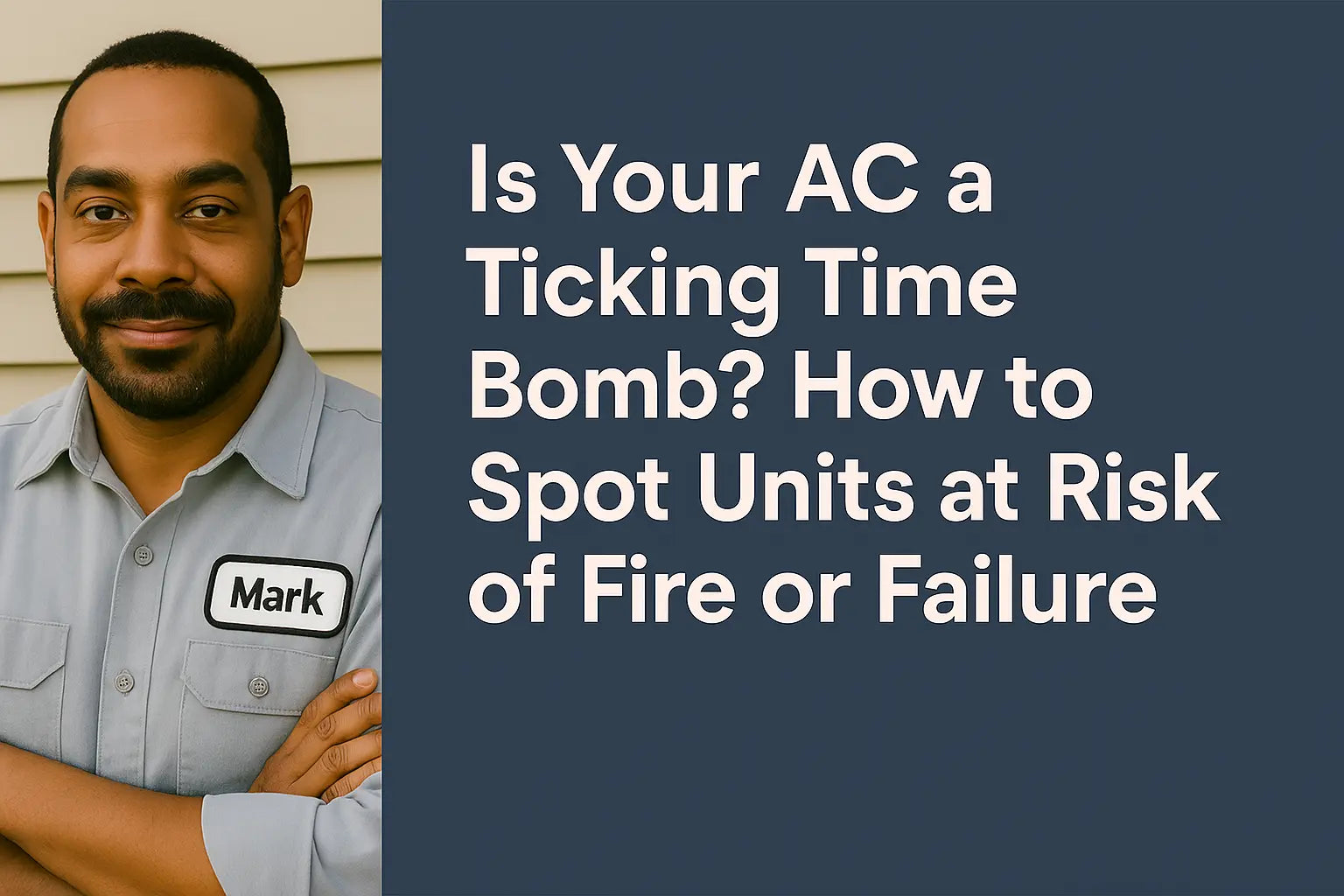It’s Mark Again—and I Smell Trouble 🧯
Let’s get something outta the way: I don’t like fearmongering. But what I do like is warning you before your AC explodes. Call it pessimism, call it tough love—I call it common sense.
After the Trane recall on thousands of packaged gas-electric HVAC systems, I started hearing the same line from customers:
“How was I supposed to know my AC was a fire risk?”
Simple answer?
Nobody told you what to look for.
So now I’m gonna tell you. This isn’t guesswork—it’s everything I’ve seen on rooftops, in basements, and behind burned-up breaker panels. We’re talking early warning signs, visual clues, and the five-minute tests that’ll help you avoid becoming HVAC headline news.
Quick Recap: What Happened with Trane? 🔥
Trane and American Standard got hit with a massive recall in 2024 for gas-electric packaged units that could pose a fire hazard during propane conversions. The culprit? Incorrect burner orifices in the LP kits. Boom—too much gas, bad combustion, and real danger.
The Consumer Product Safety Commission confirmed it—19,400 units recalled. And guess what? That’s just what got reported. You think those were the only bad installs out there? Yeah, right.
So if you’re sitting on a 5-year-old system with R-410A, converted propane, and questionable parts, then congrats—you might be sitting on the next recall.
Five Signs Your AC Might Be a Ticking Time Bomb 🚨
Alright, here we go. Mark’s unofficial checklist for disaster.
1. It Uses R-410A (aka HVAC Dinosaur Juice)
If your unit still runs on R-410A, you’ve got a problem. It’s getting phased out fast by the EPA under the AIM Act, and that means:
-
Replacement refrigerant is harder to find
-
Servicing it gets more expensive
-
Older units tend to overheat or short cycle
Don’t know what your system uses? Open the outdoor unit panel and look for the label near the line set. If it says R-410A, it’s time to start shopping.
2. Your System Has a Dual-Fuel Setup or Conversion Kit
Remember those Trane systems? The real issue wasn’t just design—it was the conversion from natural gas to LP propane. That required a burner orifice change.
If your system runs gas in winter and cools electrically in summer, and if there was any kind of LP kit involved, you’re at higher risk for:
-
Overpressure combustion
-
Faulty ignitions
-
Improper venting
-
FIRE. 🔥 Like, actual fire.
3. Your Breaker Trips During Start-Up
This one’s sneaky. If your outdoor unit kicks on and trips the breaker, you’re likely dealing with a failing:
-
Run capacitor
-
Contactor
-
Compressor with locked rotor amps
This means your unit is overdrawing power on startup—something that can fry components or ignite faulty wiring.
Want to read more? Here’s a solid guide from HVAC School that walks through ignition issues and what causes them.
4. Your AC Smells Like It’s “Burning”
That weird smell? It’s either:
-
A fried capacitor
-
Melting wire insulation
-
Dust burning off your heat strips
-
A critter who decided your disconnect box was a condo
Either way, if your AC smells wrong, sounds wrong, or feels hot to the touch, it’s not “aging gracefully.” It’s screaming for retirement.
5. Your SEER Rating Is Below 14.5
Anything below SEER2 14.5 is now considered low-efficiency, outdated, and costing you money. If it’s also using old refrigerants and patchwork components, you're basically duct-taping your climate control together and hoping it holds.
Energy.gov has a great breakdown of what modern systems should be achieving. Spoiler alert: if yours was installed before 2015, it probably ain’t cutting it.
What Does a “Safe” AC Look Like Today? ✅
Glad you asked.
A properly sized, modern air conditioning system should:
-
Run on R-32 refrigerant
-
Have a SEER2 rating of 14.5 or higher
-
Pair with a 96% AFUE natural gas furnace
-
Require no LP conversion kits
-
Be backed by certified install instructions and factory support
Systems like these aren’t just safer—they’re built for the future of HVAC, not the past.
What If I Already Have a Risky AC? 🔧
Loaded Mark’s Emergency Protocol (you’ll thank me later):
-
Kill the power to the system before inspection. Safety first.
-
Check the refrigerant label. R-410A? Time’s ticking.
-
Look for burn marks around electrical panels or contactors.
-
Sniff for smoke, melted plastic, or “hot dust” smells.
-
Call your HVAC tech or local fire department if anything’s suspect.
If you're not sure, don't gamble. If a tech tells you “it’s probably fine” but doesn’t test components, get a second opinion.
Final Word From Mark 🧢
Look—I’m not saying every old unit’s a death trap. But after 20+ years in this business, I’ve seen more blackened disconnect boxes than I care to count. And I’ve smelled the aftermath of one too many system meltdowns.
If your AC was built when TikTok wasn’t a thing, it’s time to move on. If your breaker trips when the system kicks on, it’s time to investigate. And if your unit’s part of a recall? Don’t wait for a call from the fire department.
Visit The Furnace Outlet, check out the R-32 systems, and replace that time bomb with something built for 2025—not 2005.
Need more safety tips for these systems after the recall? Visit: What the Trane Recall Really Tells Us About HVAC Safety—and Why R-32 Isn’t the Problem.
Trust me, you’ll sleep better knowing your system isn’t trying to kill you.
Catch you next time,
– Mark 🔥







